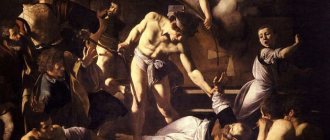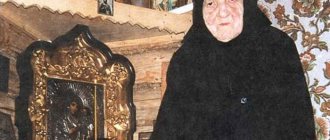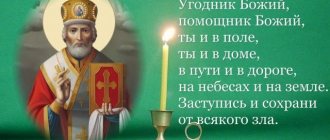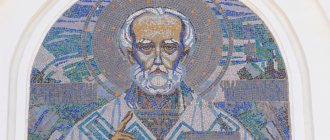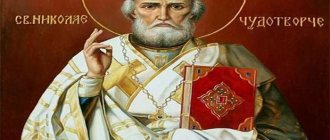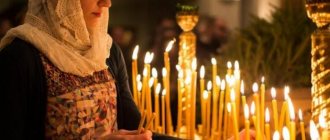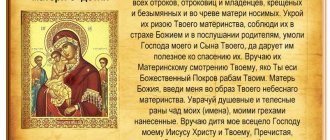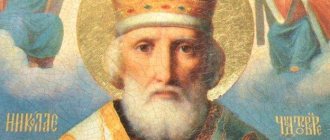Surely many Orthodox parishioners have heard about such a concept as prayer by agreement, but few have thought about it and know what it is. The essence of such a prayer is that several people agree among themselves to read a prayer with the same request at a certain time and over the same period of time. Such a prayer can be read even while being hundreds of kilometers away from each other. It should be noted that, according to many priests, such requests have the greatest power. It can be read both to the Lord God himself and to any of the saints. Most often, a prayer is read by agreement to St. Nicholas the Wonderworker. Since this saint has been considered the most revered since ancient times. People turn to him for help in all everyday difficulties.
How to correctly read a prayer by agreement to St. Nicholas the Wonderworker
A distinctive feature of this prayer from others is that it is read not by one person, but by at least two, and a maximum of thirty people. Even if they are at a minimum distance from each other, they begin to read it at the same time. It is pronounced if a difficult situation, an incurable disease, trouble or grief, etc. has arisen in the life of one of your loved ones or acquaintances.
The very reading of such a prayer represents an entire Orthodox ritual. It can be done daily and even several times a day. Typically it goes like this:
- Before you decide to read the holy appeal by agreement, you need to clearly define the purpose and group of people who will appeal to the saint.
- After the goal has been set and all the details have been agreed upon (namely, the time, period of reading, and what the petition will be asked for), you can begin to read the akathist.
- Only after reading the akathist can you begin to say a prayer.
Also read: Prayer so that your husband does not cheat
Before you start reading the prayer, according to the agreement of the Bulgarians, the akathist to St. Nicholas the Wonderworker must undergo preparation. It is necessary to visit a church or temple and undergo the rite of communion and confession. You also need to contact the priest for a blessing. This approach will only increase the likelihood of successful completion of the journey begun.
And the words of prayer will be much stronger with a blessing than without it. It is recommended to ask for a blessing from a priest who knows your spiritual state well. Before he gives his blessing for reading the akathist and prayer, you must briefly outline to him the essence of the problem that prompted you to read the akathist. Do not forget to name all the persons who will perform this ceremony with you.
After receiving a blessing from the priest, God will definitely send his grace to a good deed.
When to read a prayer text to Nicholas the Ugodnik
Prayer by prior agreement is carried out not only with an appeal to the Creator, but also to any saint.
Quite often, Orthodox believers agree to pray to St. Nicholas the Wonderworker. People turn to the saint with absolutely any request, but most often the prayer is offered in the following cases:
- to bless children and give them success in learning;
- when looking for a person to start a family;
- about healing the seriously ill and alleviating their suffering;
- about blessing loved ones whose work involves dangerous situations - drivers, sailors;
- when looking for a suitable job and material wealth;
- about assistance in trade matters and doing business;
- on the successful resolution of legal disputes and the removal of unfair charges.
In order for a saint to hear a joint prayer and come to the rescue, certain rules must be followed:
- each person who participates in the ritual must do so at the behest of his heart, and not as a favor;
- the prayer should be read regularly and exactly at the time agreed in advance; it is not advisable to skip days;
- everyone participating in the prayer must first visit the temple, confess and receive communion, and also receive the blessing of the priest to conduct the ceremony.
True miracle worker
Nicholas understood perfectly well that the ruler, under the influence of numerous associates, could change his mind and change his decision at any moment. Therefore, it was necessary to announce his will to the Byzantine people as quickly as possible. After this, the emperor would hardly have decided on such a desperate act. But the capital of a huge state and the city where Nikolai Ugodnik was archbishop were separated by thousands of miles.
Then the priest, being a true believer and never losing hope in the Lord God, performed a miracle, which was subsequently imprinted in his life.
The saint put the scroll in a reed tube, went out to the seashore and, having prayed fervently, threw the message into the water.
One of the priests of the city of Myra had a vision that night. Saint Nicholas appeared to him and said that the next morning he should go to the seashore and look for a reed tube with a message in the water. The church servants did just that, found a scroll with the emperor’s order and immediately announced it to the people. The governors, seeing the seal of their ruler, although reluctantly, nevertheless obeyed the order, kissed the document and announced the order.
Konstantin really soon intended to change his decision and called Nikolai to his place for a second audience. He said that he got excited by making such a hasty decision. The ruler demanded a scroll with a decree, but the priest replied that the will of the ruler had already been announced to his subjects. Konstantin was a true believer. It was he and his mother Elena who organized the expedition, during which they managed to find the Cross of the Lord. Therefore, he took this as a sign from above and released the archbishop, saying that the tax would remain as stipulated in the document, that is, it would not exceed the amount of 100 gold coins.
Great Martyr
The Akathist to St. Nicholas the Wonderworker of Myra also tells that the years of the patriarchate of Nicholas the Pleasant fell on a difficult period for the Christian faith. The official religion of the Roman Empire, which then included Byzantium, where the saint served, was paganism. All citizens of the country were obliged to worship the Olympic gods, make sacrifices, erect idols, and so on.
The next emperor of a huge state was such an ardent adherent of his religion that he declared severe persecution of the Christian faith and people who adhered to it. Those who revered the Savior were asked to renounce their beliefs. Otherwise, they were subjected to terrible executions and torture. The most terrible test was this: those people who did not renounce their God were taken to the arena of large amphitheaters and fed to lions. This action took place in front of several thousand spectators who were specially going to watch the bloody torture. Such an execution is shown, in particular, in the famous film about the life of the Apostle Peter, “Camo is Coming.”
Saint Nicholas, whose akathist is heard annually in all Orthodox churches, was also persecuted. Because he defended his fellow believers, he was imprisoned, where he remained for several years. During this time, the saint was often tortured, including on the rack, which was one of the most terrible instruments of torture. Nikolai Ugodnik survived in these difficult conditions. Thanks to his steadfastness and strength of faith in Christ, after his death he was canonized as one of the holy great martyrs, although he did not die in prison from torture.
Santa Claus
In addition to the Orthodox Church, this saint is revered by all Christian denominations. In Western Europe, as well as in the United States of America, he became the prototype of the famous fairy-tale character who delivers Christmas gifts to children. One of the legends says that when Nikolai Ugodnik threw a bag of money through the window of his bankrupt neighbor, this gift ended up in a stocking that was drying near the fireplace. Therefore, children in Western Europe and America have a long tradition of hanging this piece of clothing on Christmas Eve in anticipation that the good Christmas wizard will put his gifts there.
Initially, this custom appeared in Germany, the Netherlands and a number of other countries. At first, the day when Nicholas brought his gifts to obedient children was considered December 6th - the day of remembrance of this saint of God. Later, during the period of the Reformation, when the veneration of saints was prohibited in Western Christianity, this custom had to be rethought.
The date of the children's party has changed. Now the little Europeans were expecting their heavenly patron not on December 6, but on the 25th. And St. Nicholas himself had to be replaced with the baby Jesus Christ. Later, when Europeans again began to venerate saints, the Archbishop of Myra again took his place among fairy-tale characters. This tradition was brought to the United States by Dutch settlers. The work of the poet Clement Clark Moore played a huge role in creating the modern image of Santa.
It was in this children's poem that many of the attributes of a fairy-tale character were first described: deer (all of them are named), clothing, entering houses through a chimney, and so on.
In Holland, children can currently receive gifts from the saint both on December 6, his memorial day, and on Christmas Eve.
Archbishop of Myra
The young man decided to devote himself to serving God. He first becomes a deacon, and after that he is ordained a priest. One day he happened to be at a meeting where the election of the archbishop of the city of Myra was taking place. For a long time, those gathered could not decide who should be appointed as the chief shepherd of a fairly large region.
After the first day of the meeting, one of the high-ranking members of this meeting had a dream in which God told him that Nicholas should become the new leader of the church. When the young man was informed that he had been chosen to be archbishop, he refused, declaring that he was unworthy of such an honor. But when they told him about the miraculous vision, he fulfilled the will of the Almighty and entered into the priesthood.
New life of akathists
The Akathist to St. Nicholas the Wonderworker of Myra, like many others, became a necessary attribute of the Orthodox Christian life of a large number of people after the October Revolution. During that difficult time for religion, many churches were destroyed; a huge number of surviving churches were given by the Soviet government to various non-church organizations for exploitation for purposes far from spiritual life.
In such a difficult period, the akathist to St. Nicholas, like many other examples of this genre of church poetry, turned out to be necessary for those people who, in spite of everything, continued to believe in God and gather for collective prayer.
As has already been said, these chants can be performed anywhere and at any time, and the presence of a clergyman is not necessary for this. Therefore, those believers who lived far from existing churches actively used this type of prayer.
A huge number of akathists were created in that era. Unfortunately, the publishing of religious literature was practically stopped at that time, and therefore many masterpieces are now lost.
Three types of icons
Perform the prayer to St. Nicholas the Wonderworker is accepted in front of his iconographic images.
In the Orthodox church calendar there are three holidays dedicated to this saint. They are celebrated in winter, spring and summer. There are also 3 types of iconographic images of the Archbishop of Myra. In some of them, St. Nicholas the Wonderworker appears before worshipers with his head uncovered. Such icons are usually called “Nicholas the Summer”.
“Winter” refers to the image of this church figure, in which he is depicted wearing a headdress, which is a necessary attribute of bishops.
There are also icons where the saint can be seen surrounded by images of Jesus Christ and the Virgin Mary. On such canvases he may also be dressed in clothing typical of archpastors, and have other distinctive signs of the supreme clergy.
Pious youth
What does the akathist to St. Nicholas say? In addition to the laudatory parts, in which believers sing the glory of their heavenly patron, the work also talks about the earthly life of the Archbishop of Myra.
Saint Nicholas, whose akathist is discussed in this article, was born in that area of Turkey, which is now called Antalya and is famous for its seaside resorts. At that time, this land was part of the Great Roman Empire. The child grew up religious, often prayed and read spiritual literature.
Subsequently, he received a large inheritance from his wealthy parents, which Nikolai spent on such charitable deeds as helping the poor and paying debts for those people who could not pay their creditors on their own.
One of the first good deeds mentioned in the life of the saint was performed under the following circumstances. One of Nicholas the Wonderworker's neighbors went bankrupt. To improve his financial situation, this man decided to sell his own daughters into slavery. The whole family was in grief and confusion. The girls' eyes did not dry out from tears. But one night a miracle happened. Someone threw a bag of gold coins under one of the windows of the house. The amount was enough to completely pay off the debts. One of the following nights, another bag of money flew through the open window. The funds went to the dowry of the eldest daughter, who was soon married off.
The same gift was presented to another girl. The owner began to guess about the plan of the unknown patron and spent most of the night awake, waiting for the next appearance of the gifts. He wasn't wrong. One day, at a fairly late hour, a bag of money flew into the window of their house again. The man who saw this immediately ran out into the street and rushed after the man running away. He managed to overtake this man. He turned out to be the future Saint Nicholas, whose akathist is performed in the church on the days of memory of this ascetic. The father of three daughters fell at the feet of his benefactor, thanking him with tears for the help he provided to his family.
How not to do it
When starting to conduct prayer, it is necessary to remember that it is impossible to force the Almighty to fulfill a request by simply increasing the number of participants in the ritual. Believers must be prepared for the fact that God will not quickly respond to an appeal or will not fulfill a request at all if it is not in His will.
Prayer by prior agreement implies that all Christians are asking for the same problem; if everyone begins to turn to the Lord at this time with personal needs, this will violate the whole meaning of the ritual. You cannot violate the established time of the ritual or skip days. It is worth assessing your strengths and capabilities in advance, and only then agreeing to participate in this religious event.
Perestroika and poetry
A new round of development of akathists took place in the late eighties and early nineties of the 20th century. Then, due to perestroika, religion came out of hiding. More and more people began to come to temples. Many young poets became interested in spiritual literature, in particular the akathist to St. Nicholas the Wonderworker, and, imitating ancient examples of chants, they began to create their own works in the same spirit.
There is a special website on the RuNet that publishes both long-known akathists and those that appear today.
